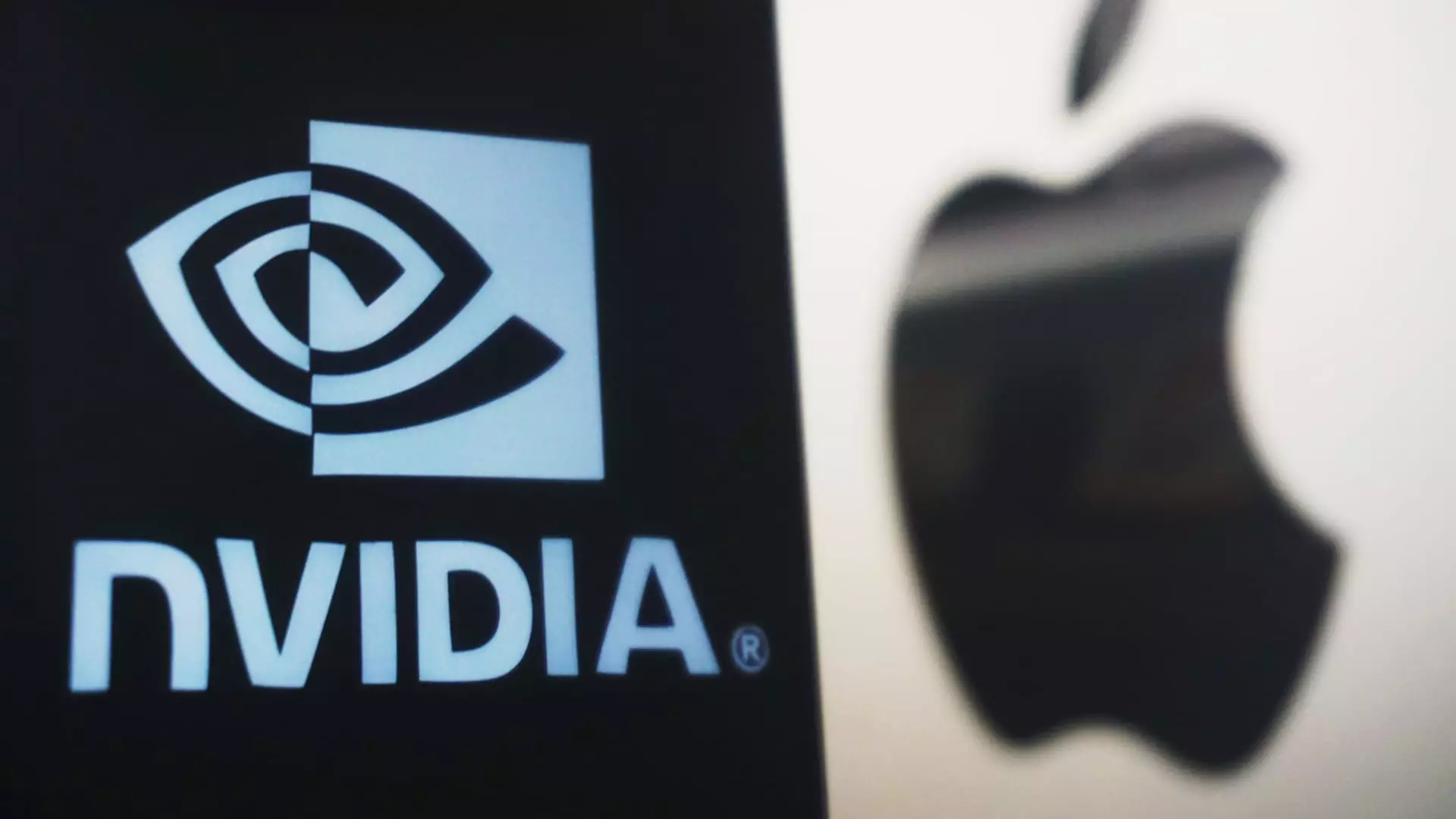On a remarkable Monday, a surge in technology and semiconductor stocks was spurred by an unexpected yet crucial decision: the United States and China announced a temporary suspension of tariffs on each other’s goods. This development comes amidst a backdrop of escalating trade tensions that have historically jeopardized supply chains vital for tech conglomerates. The mood shifted from ominous to optimistic as investors processed the implications of these negotiations, igniting a rally that sent shares soaring in premarket trading.
The semiconductor industry, in particular, has felt the brunt of these tariffs due to its deep-rooted connections with both the American and Chinese markets. Companies like Nvidia and AMD experienced notable gains of around 4% and 5%, respectively, signifying a renewed investor confidence. This upswing exposed the profound interconnectedness within the tech sector as other auxiliary players, such as Broadcom and Qualcomm, mirrored these gains, fostering a sense of collective relief across the relevant markets.
Market Reactions: More Than Just Numbers
The sheer statistics coming out of the premarket session—Marvell’s impressive 7.5% leap and TSMC’s notable 4% bump—underline a far deeper sentiment in the investor community. This is not merely a numerical reflection, but a celebration of hope for the future of an industry that thrives on innovation yet has been beset by uncertainties. Analysts are emphatically interpreting this as a sign that supply chain woes might receive some respite, unlocking the potential for renewed growth in a sector that has been experiencing significant strain.
Moreover, this sentiment extended beyond U.S. borders as European firms like ASML and Infineon also reported bumps in share prices, underscoring the global ramifications of U.S.-China trade dynamics. The state of the semiconductor supply chain can trigger ripple effects worldwide; hence, the positive response from European markets speaks volumes about the international implications of these negotiations.
Apple and Amazon: Navigating Through Choppy Waters
Tech titans Apple and Amazon, which have reportedly been wrestling with the complexities of tariffs for quite some time, responded favorably to the news. Apple saw an uptick of more than 6%, alleviating some burdens as it grapples with the reality of tariff-related costs estimated at $900 million for the upcoming quarter. The company’s dependence on Chinese manufacturing for 90% of its iPhone production makes it particularly vulnerable within this trade landscape.
Similarly, Amazon’s shares surged, with an increase of over 8%, primarily motivated by its reliance on a robust supply chain that includes numerous Chinese suppliers. This mutual buoyancy between the two powerhouse firms signifies an underlying current of optimism—that not only are they surviving but potentially thriving as trade tensions unwind.
Chinese Tech Stocks: A Vital Spark
U.S.-listed Chinese tech stocks also joined the rally, shining a light on the interwoven fates of these two economic giants. Companies like Alibaba and JD.com saw increases, demonstrating that this pause in tariffs could reinvigorate the dynamics of trade between the U.S. and China, which has often been characterized as a tug-of-war. Baidu’s upward trajectory adds yet another layer to the narrative; as Chinese firms gain, it reflects a balanced recovery where the benefits are shared across borders.
As Daniel Ives of Wedbush Securities pointed out, the current climate might just be a harbinger for a more expansive deal. He envisions a trajectory toward “new highs for the market and tech stocks” by 2025, navigating the contours of ongoing negotiations. The sheer notion of a “broader deal” offers an enticing narrative, and investors are clearly optimistic about the future prospects of the tech landscape.
The Long Road Ahead
While the initial relief is palpable in the stock markets, a crucial caveat remains: the long-term sustainability of this rally. Investors must remain vigilant regarding the evolving nature of trade relations between the U.S. and China. The temporary suspension of tariffs is a step forward, yet the reality is that underlying tensions still linger. Tech companies will have to continue innovating while strategically managing their supply chains in order to navigate these murky waters successfully.
As the world watches the next steps in this ongoing saga, the question begs: will we witness a renaissance in tech that ushers in unprecedented growth, or merely a fleeting respite amid continued volatility? Ultimately, the future of these markets—filled with hope and uncertainty—will define the trajectory of technology in our increasingly interconnected global economy.

